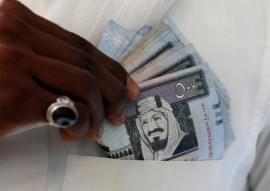
The Lahore Chamber of Commerce and Industry (LCCI) said in a statement on Saturday that it would hit the overall economy hard as provision of financing to the business community has been made dearer.
LCCI President Zafar Iqbal Chaudhry said that the SBP has adopted a wrong way of dealing with inflation. The decision would not help curtail fiscal deficit or control inflation as it had not served the purpose in the past either, rather it would create trouble for new investors, he said.
“At this point in time when both the trade and industry were in dire need of some special package, the increase in interest rate will prove only counterproductive to economic recovery,” he stated.
He said that the cost of doing business in Pakistan was already the highest in the region. “In India where inflation is 11 per cent and fiscal deficit is more than that of Pakistan’s, the interest rate is 5.75 per cent,” he said.
The central bank should have reduced the banking spread from 7.8 to 3.5 per cent to control the inflation instead of jacking up the discount rate by 50 basis points, he added.
Vice President Saarc Chamber of Commerce and Industry, Iftikhar Ali Malik, also took strong exception to the increase in policy rate and termed it detrimental to economic growth.
He said that the increase in the discount rate against the wishes of businessmen was a disfavour to the economy as it would be hitting hard new investments. “How can the government expect any new investments when it itself is taking measures to discourage it,” he questioned.
He said that Pakistan was fast attaining the status of a costlier country for doing business when it is compared with other regional players.
Chairman Pakistan Industrial and Traders Associations Front (PIAF), Irfan Qaiser Sheikh, said that it would have been better had the government curtailed the policy rate to a single digit.
He said that it seemed that the policy-makers at the State Bank were ignorant of the ground realities. “If the agriculture and real estate sectors are brought into the tax net, it would not only help the government get more revenue but would also give it enough breathing space to rationalise existing rates of taxes,” he added.
The Islamabad Chamber of Commerce and Industry (ICCI) also strongly resented the raise of 50 basis points in the discount rate. ICCI President Zahid Maqbool said that the increase in interest rate will also affect the tax collection target as contraction in business activities triggered by a high credit cost will lead to less business income and less tax revenue. He said that the government should promote a business-friendly environment by reducing utility tariffs and interest rate and should not resort to harassment because such steps always discourage promotion of tax culture.
Korangi Association of Trade and Industry (KATI) Chairman Razzak Hashim Paracha said: “Experts had already warned the SBP about the negative aspects of the increase in interest rate but this move shows that the decisions are being taken somewhere else.”
President Pakistan Businessmen and Intellectuals Forum (PBIF), Mian Zahid Husain, also warned the government about the adverse consequences of a frequent increase in discount and export finance rates.
“Non-performing loans have already reached over Rs500 billion and the recent move by the SBP will further increase the monetary burden on the national exchequer,” he warned.
Published in The Express Tribune, August 1st, 2010.

1732868310-0/BeFunk_§_]__-(72)1732868310-0.jpg)
1732869272-0/diddy-(47)1732869272-0-165x106.webp)














COMMENTS (3)
Comments are moderated and generally will be posted if they are on-topic and not abusive.
For more information, please see our Comments FAQ